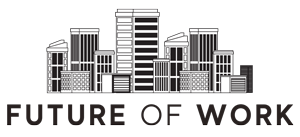The landscape of employment has experienced significant shifts throughout various industries in the UK. A recent report by Access PeopleHR for the year 2023 indicates a staggering increase in the use of sick leave, which may have profound implications for the future of work.
With an eye on a year marked by strikes, cost-of-living qualms, and the novel concept of hybrid working, the report registers a notable surge in sickness absence rates higher than preceding years. Specifically, 2023 saw these rates escalate by 55% compared to 2019 figures. Conversely, this uptick also poses questions regarding the possible prolonged effects of the pandemic on the workforce.
In the realm of HR, the data serves as a clarion call for a recalibration in strategies to manage and mitigate the impact of increased sick leaves. Adequate HR software becomes indispensable as it equips employers to dissect patterns of absences and address workplace welfare issues such as burnout, stress, and exhaustion before they burgeon into larger predicaments.
The Current Status of Sick Leave in the UK
An exploratory dive by Access PeopleHR into absence records from over 1,775 small and medium-sized businesses unveils an average of 128 sick leave days per company in 2023—an upsurge from the prior year’s 120 days. This trend is a testament to the shifting attitudes towards sick leave, possibly affected by the Government’s initiatives aimed at bolstering workplace health and curbing protracted sickness.
Employers are now poised at a critical juncture where it is incumbent upon them to proactively discern and remedy sickness rates to prevent further issues. HR systems emerge as vital tools, streamlining the process of tracking and interpreting absence patterns, ensuring holiday entitlements are fully utilized, and pinpointing whether the problem is individualized or part of a larger trend.
Trimming down sick leave could be as clear-cut as bolstering company sickness policies, promoting a harmonious work-life balance, and reinforcing the legitimacy of taking sick days to guarantee recuperation and evade burnout.
An Industry Deep-Dive
A detailed analysis by Access PeopleHR uncovers varied experiences across industrial sectors regarding sick leave occurrences. Notably, the real estate industry has been severely afflicted with a 67% increase in sickness absence in the last year, signalling a worrisome 98% spike since 2019. Factors such as greater in-person interactions accompanied by heightened hygiene caution and the emotionally charged nature of the profession are potential drivers of this trend. The University of Cambridge corroborates this with findings of mental health issues reported by 23.6% of workers within the industry.
The recruitment sector, having embraced hybrid working, observed a 16% escalation in sickness rates, while the arts, entertainment and recreation sectors combat a significant 159% growth in leave since 2019—potentially a reflection of altered sentiments towards sickness in the post-pandemic workplace.
Financial services also face a 67% hike in absences since 2019, pointing to an ageing workforce and rising stress levels as factors. Meanwhile, sectors such as agriculture, forestry, and fishing experience increased absences, reflecting the physically demanding nature of the work. Conversely, the retail sector displayed a comparatively modest 6% rise attributed to the convergence of low statutory sick pay and the financial strains from the cost-of-living crisis, with a staggering 76% of retail workers reportedly unable to afford sick leave.
How Sick Leave Has Impacted Industries in the Last Four Years
Sick leaves have shown a consistent year-on-year increase across most sectors, which could be partially due to the enduring symptoms of long-COVID, persisting in 3.1% of the population in 2023. Moreover, the reversion to traditional work structures, with most industries mandating returns to office work, correlates with increased absences, especially in sectors with less flexibility for remote work.
As the inevitability of illness presents an ongoing challenge, businesses confront the task of identifying and acting upon the root causes of absences. Utilizing HR software is critical—allowing for the analysis of recurring issues, optimizing attendance, and potentially prompting necessary reviews.
As businesses evolve, staying attuned to employee engagement and retention becomes crucial. With the right strategies and tools, companies can not only prompt employees to take necessary time off but also harness insights into the reasons behind employee disengagement, ultimately fostering a healthier, more productive working environment.






